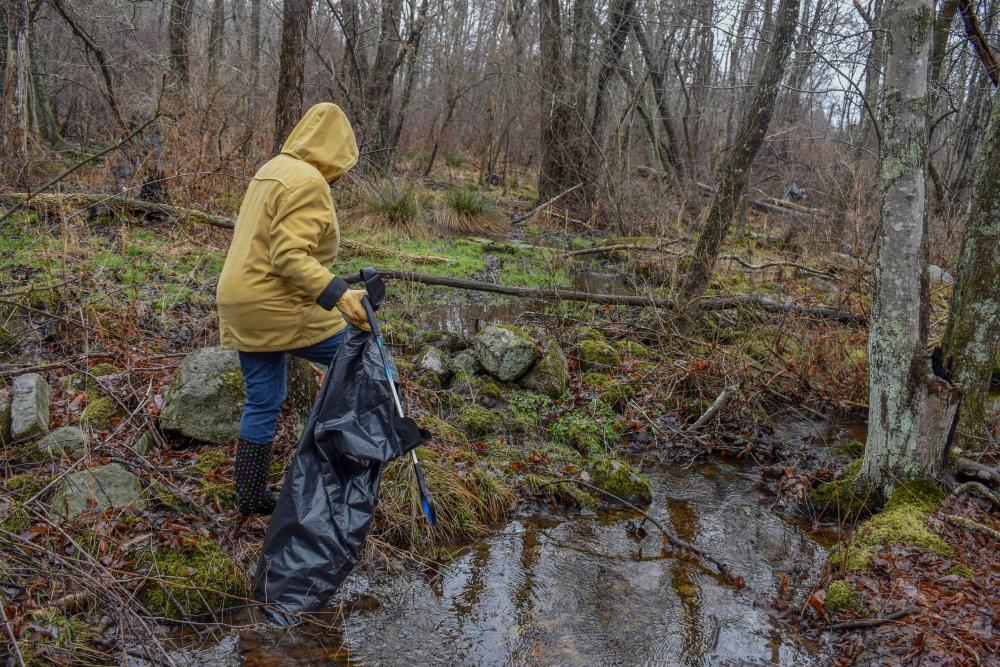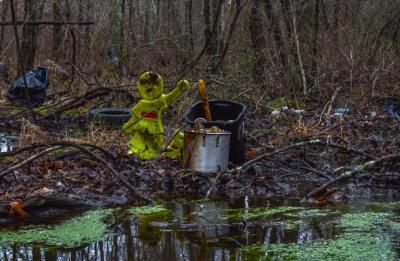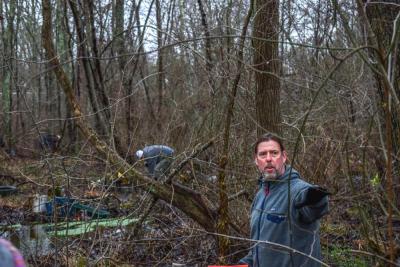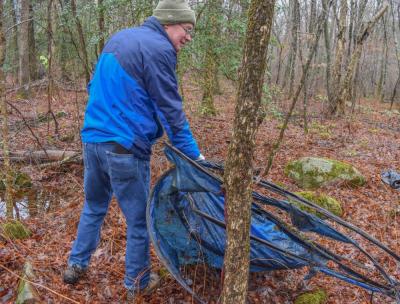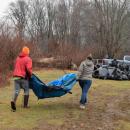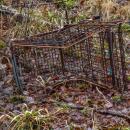Volunteers help clean up Buttonwood Brook
NEW BEDFORD — New year, new brook. At least, that’s what Buzzards Bay Coalition member Daniel Goulart hopes to achieve with the Buttonwood Brook, which flows from New Bedford down to Dartmouth’s portion of the bay.
On Jan. 14, dozens of volunteers clad in work gloves and waterproof boots cleaned part of the brook as part of the coalition’s ongoing effort to restore the major tributary as part of its Buttonwood-to-Bay project.
The project, which is estimated to last five years, tackles water quality issues in Padanaram Harbor and its major tributary, the Buttonwood Brook. Work is funded through the U.S. Environmental Protection Agency’s Southeast New England Program, which focuses on local watersheds including Buzzards Bay.
Goulart is the project’s manager. Saturday’s cleanup was done in collaboration with the Friends of Buttonwood Park and Dartmouth Natural Resources Trust.
“A lot of this pollution ends up flowing to my place,” said volunteer Danny Whitehead, who lives in Dartmouth by way of Mississippi and Oregon. “There’s always trash to pick up wherever the water flows.”
During the three-hour cleanup, volunteers helped to clear a number of man-made objects from the woods just north of St. Mary’s Cemetery.
Much of the debris consisted of scattered bottles and cans, though many volunteers found around half a dozen tents that were likely used as temporary shelters. Volunteers also found dozens of carefully wrapped used diapers under bushes and cash from the former nation of Yugoslavia, which disintegrated in 1992.
“I’m shocked by how much stuff is back here,” said Dartmouth volunteer Russ Wotton.
How it got there was anyone’s guess. Though Goulart theorized that the money could have been blown from the cemetery from strong winds.
“It probably has an amazing story attached to it either way,” he said.
Cleaning these out, Goulart said, is a good tangible step in the multi-year project that has been “going really well.”
In the nearly one year since the project launched, he said the coalition has collected a lot of data to find sources of pollution in the brook, some of which dispels myths claiming Buttonwood Pond in New Bedford is a major contaminant contributor.
“In fact, the pond is removing immense amounts of pollution,” he said.
Some of the major sources discovered through this project, Goulart said, have been coming from tributaries near the George farm on Slocum Road and from Dartmouth’s Bliss Corner neighborhood — which was known to be a historic dumping ground for decades.
Another concern has been the amount of nitrogen entering regional estuaries, something state and Dartmouth officials have been at odds on how to reduce.
Other sources include residential streets and other man-made surfaces. Goulart noted that the parking lot at the Dartmouth Shaw’s on Route 6 brings additional heat to water caused by sunlight warming the surface (along with snow melts).
This goes into the brook, leading to additional algae growth in winter, as warm temperatures allow the plant to float to the surface faster and absorb more sunlight.
“And that algae lowers the oxygen in the water,” he said. “This makes it impossible for anything else to live in it.”
This includes fish that were once native to the estuaries prior to the development of the South Coast.
Reintroducing fish populations is one of the long-term goals of the Buttonwood-to-Bay project, Goualrt said. As work continues, he said the Buzzards Bay Coalition hopes to collaborate with the Dartmouth Natural Resources Trust to remove a couple of the man-made dams from land trust property in order to help facilitate fish populations returning to those waterways.
“I would really like to see fish there,” Whitehead said. “Though it probably won’t happen in my lifetime.”



